#contemporary basketry
Text
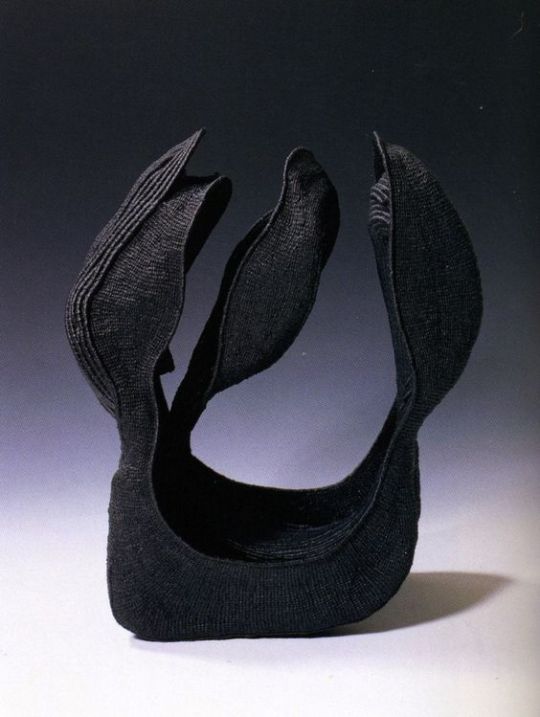
Ferne Jacobs Shin
17 notes
·
View notes
Text

"A night on the village"
Basket is woven from red and yellow cedar bark
Lisa Telford, American, born in 1957 is a weaver who creates contemporary garments, shoes and other objects using Northwest Coast style weaving techniques. Her work serves as a commentary on Native identity, stereotypes and fashion.
Born in Ketchikan Alaska, Telford is a Gawa Git’ans Git’anee Haida Weaver and comes from a long line of weavers including her grandmother, mother, aunt, cousins, and daughter. She learned the traditional techniques of Haida basketry from her mentor Delores Churchill, and Haida cedar garments thanks to Holly Churchill. She began weaving in 1992, and for twelve years closely followed the tradition that form must follow function. It wasn’t until a friend asked her to submit a contemporary basket for a show that Lisa experimented beyond the borders of traditional form. This opened a door for her, and in 2004 she was asked to design a contemporary cedar-clothing piece for a show. She used traditional methods and materials, but felt more confident and inspired to experiment – creating a contemporary clothing item from cedar.
With her National Artist Fellowship from Native Arts and Cultures Foundation, Lisa collaborated with Preston Singletary (Tlingit), known for his glass art. Preston has developed techniques to mimic the woven texture of basketry, paying homage to the geometric border designs of traditional Northwest Coast baskets. Lisa worked with Preston in his Seattle, Wash. based hot glass studio learning the hands-on skills of working with glass, how to incorporate designs and shapes, and experimenting with forms such as dress figures, working collaboratively as a designer with Preston. They hope to create some new and compelling pieces, joining their expertise from their respective disciplines.
33 notes
·
View notes
Text

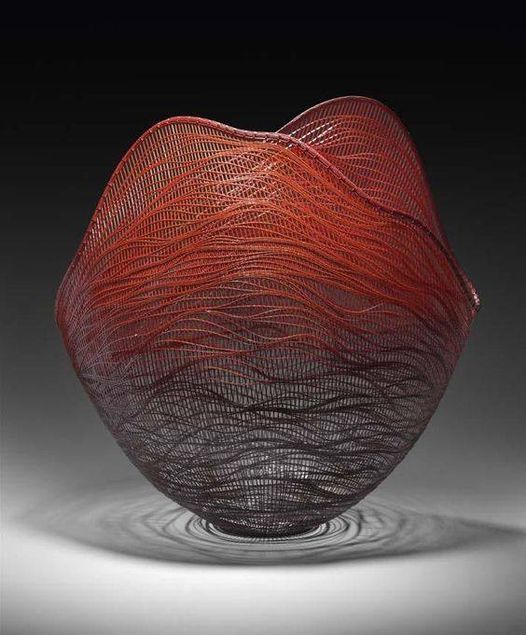



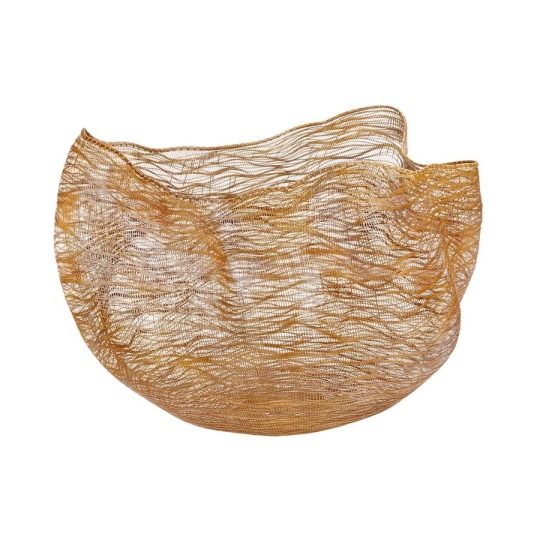


Jin Morigami (born in 1955, Japan)
Born into a family of weavers, Jin Morigami is one of the most talented creators among the young generation of bamboo artists. After completing his training, he created his studio and even employed several young assistants to help him fill the many orders he received for his delicate works, thus introducing a new style of bamboo sculpture to Oita.
As a young artist, he submitted his work to the Nitten, the Japan Fine Arts Association, and was accepted without being required to pass through the intermediate stages.
The bamboo sculptures and baskets by Japanese artist Morigami Jin, are the pure demonstration of how crafts can be utilized in creating fine art, and how skills are just one component in transcending crafts. His work is delicate, innovative, and intriguing.
Jin’s innovation has manifested in a new style of basketry, which is colorful, refined, sculptural, created in the finest skills.
“In bamboo art,” he explains, “to materialize your vision you have to keep working with the medium for many years and acquire fine skills through experience. When I start a project, I have a rough idea in mind, but it really is a joint venture between the bamboo and myself.”
https://daniellaondesign.com/.../the-bamboo-world-of.../
23 notes
·
View notes
Text
#Slump #Lump
Slump at Lump Gallery / Curated by Jerstin Crosby based on conversations with New York-based artist and LabSpace gallery co-director Julie Torres
SLUMP. Some words do more heavy lifting than others, and I am rather in awe of the sheer tonnage this single-word title manages to bench-press, with meanings that cover "slack," "flaccid," "weak", "defeated," "pathetic," "depressed," "low ebb," and "doldrums" not to mention "bad posture" and "a period of time marked by failure."* This is a show that registers high on the coherence-of-curatorial-intention meter. A show with this title could have ended up as a zone of airless claustrophobic overwhelm, gallery as hoarder space, due to the sheer surfeit of potential work that could have been slotted within the “Slump” rubric. Instead the show is edited with drum-tight precision, each work positioned in the space for maximum flow and impact. This is a show that breathes. Good feng shui. It’s thus paradoxical: a show called "Slump" that is in itself highly articulated - crisp, concise, highly engaged and engaging. Go figure.
An overall note on influence: Mike Kelley's splayed societal/ cultural/ subliminal abjections have inoculated the bloodstream of the body politic of contemporary art, a tribute to the necessary-ness of that artist’s efforts, the validity of which is evidenced by the spectral array of vital and meaningful work that has been made and likely will continue to be made in its wake: artist as shiner-of-light on psychic detritus that has been relegated to the societal dust heap due to collective denial, blindness, greed or best practices. It is thus no surprise that much of the physical [and nonphysical for that matter] material employed in Slump is multiplex and often recycled, repurposed or reconsidered.
Raymond Padrón’s revelatory “Tube Sock” (2023), while made of painted wood (and not literal recycled material), embodies “that which has been lost or discarded.” The single sock that evades capture holds near-mythical status in the unwritten history of laundry. The highly visible tube sock reclining on someone’s floor is another well-known trope. I will add that while “Tube Sock” in its supremely casual and might I add believable pose [why not anthropomorphize a sock?] (as for said pose, I buy its slump-ness, its nonchalance, its actual real-life tossed-ness – it’s a sculptural tour-de-force) as Padrón has rendered it appears clean enough, I cannot stop the onslaught of sock associations, which include dirt and smell. This sensory response to a monumental relief work aggrandizing a single item of bit-player clothing is a win.
Another win: the placement of “Tube Sock” adjacent to Julia Gartrell’s indelible sculptural work “Rib” [undated]. These two works by two artists working within their own bubble of slumpness manage to converge in uncannily similar shaping and sense of weight distribution. “Rib” is a work that manages to immediately attach to the mind like a parasite. I mean this admiringly. Like “Tube Sock,” it is both hilarious and beautiful, surreal and gritty, utterly evident in what it is and yet also deeply mysterious. The premise of “Rib” is simple: a single boot [(the artist’s boot) that carries questions about and signals a uselessness similar to Padrón’s single sock] with a Ruth Asawa-esque reed basketry leg figuration that sort of floats off into nothingness – no body – tethered to no world in particular, to sudden, unexpected abstraction.
Bill Thelen's untitled limp wrist project covers much of the Drawing Room annex wall. These are interactive drawings based on photos people sent to the artist in response to his request for shots of their limp wrists. The project is a canny power move by Thelen – up there with the reclaiming of the term queer in the 80s. The visual reclaiming of body-language cliché epithet celebrates and recalibrates what has historically functioned as a denigrating trope of [specifically gay, male] flamboyance** by creating what feels like a solidarity wall papered over with drawing upon drawing of images of limp wrists en repose, i.e., held aloft, hand and fingers relinquished downward to gravitational pull. The works are not gender-coded, and they’re not color coded; they’re disencoded.*** There is an expanded iteration of the project as part of the exhibition proper, a single outsized limp wrist outlined in relief with woven embroidery floss, tape and pins.
I could write in-depth on each of the works in this substantial and generous show, which was appropriately allowed to inhabit both gallery rooms. But given that it’s the last day of the show and would be nice to post it with at least a few hours left – and in light of inherent limitations of the person writing this – will list the artists here:
Amanda Barr
April Childers
Bill Thelen
Brandon Boan
Celia Gray
Conner Calhoun
Ellen Letcher
Fred Smith
Jasmine Best
Jessica Langley
Julia Gartrell
Julie Torres
Maria Britton
Nico Smith
Rachel Bernstein
Raymond Padron
Skully Gustafson
Terry Hoff
Tonya Solley Thornton
A few final thoughts: As in the conundrumical universe of curatorial practice, every piece in this show held the potential to live within infinite other parallel universes of thought. The “Slump” mindset, however, focuses the mind like hunger – or a strong need one did not know held sway within until it was met. The clarity of intention in this show was so strong it felt like I was walking around the space wearing one of those museum guided-tour headsets.
Can I just add: Slump also works as a riff on the gallery name: Lump. I read this as a kind of evolutionary equation whereby Lump [L] = Lumpen/Unformed ∆ Lump + S/ = S/lump = Slump [SL]
And another thing: A slump is a temporary condition. That will at some point turn around. Hence it posits an undercurrent of hope. With the evolutionary outcome not being verticality or a *straightening* [aka devolving / attaining regressive rigidity] but some mode of as-yet unidentified [fluid] expansion.
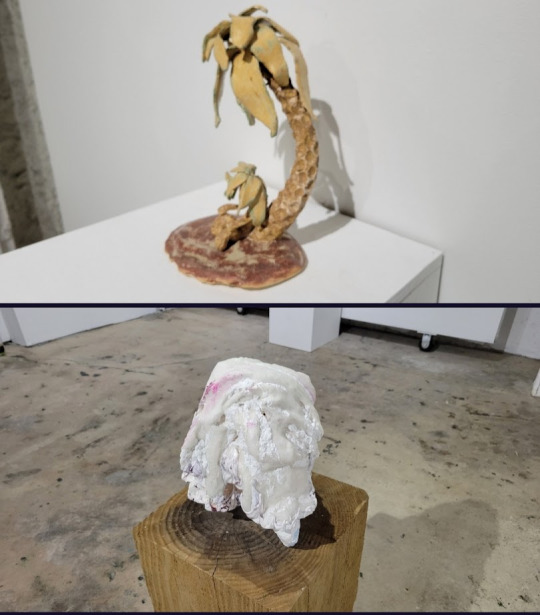
April Childers / Brandon Boan
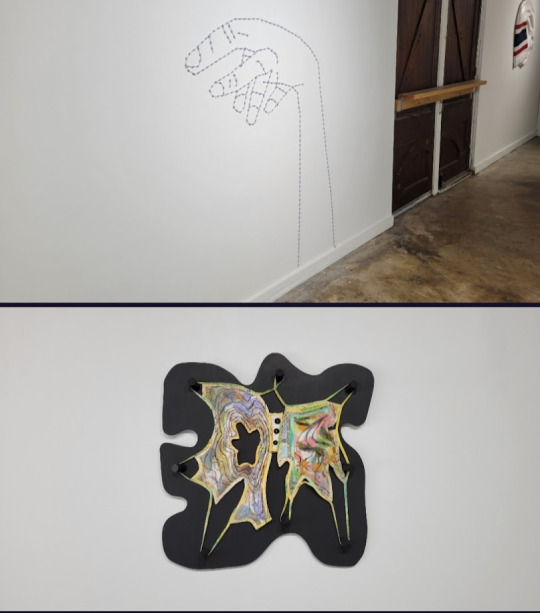
Bill Thelen / Maria Britton
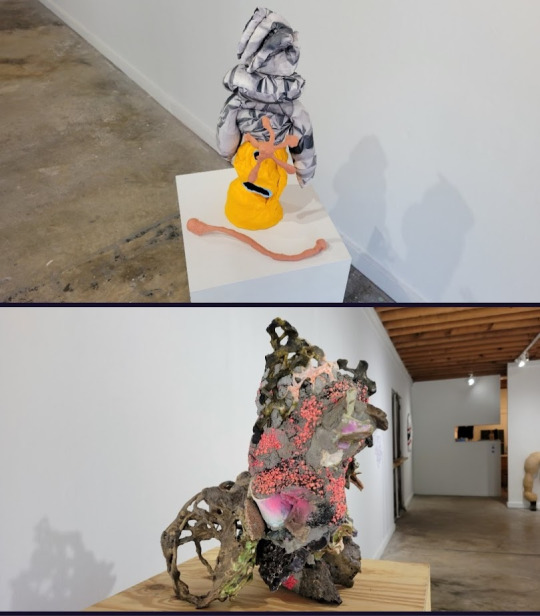
Amanda Barr / Celia Gray
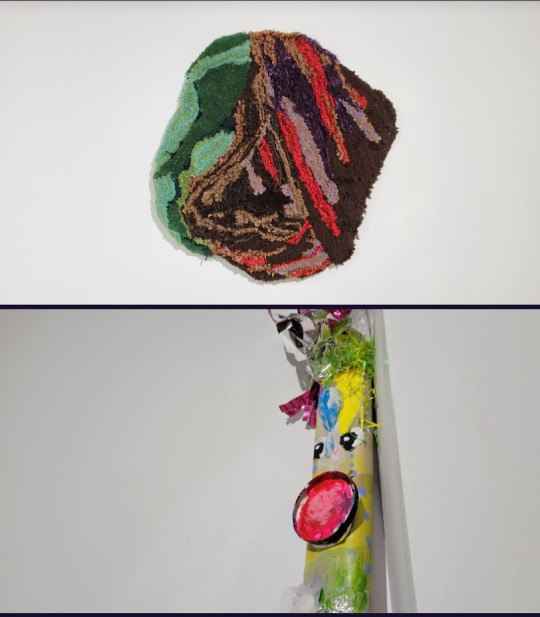
Jasmine Best / Skully Gustafson

Tonya Solley Thornton / Tonya Solley Thornton

Ellen Letcher / Lump Gallery (installation view)
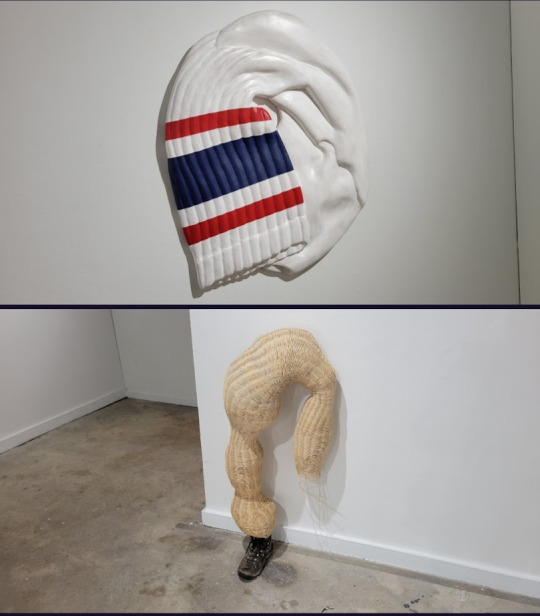
Raymond Padrón / Julia Gartrell
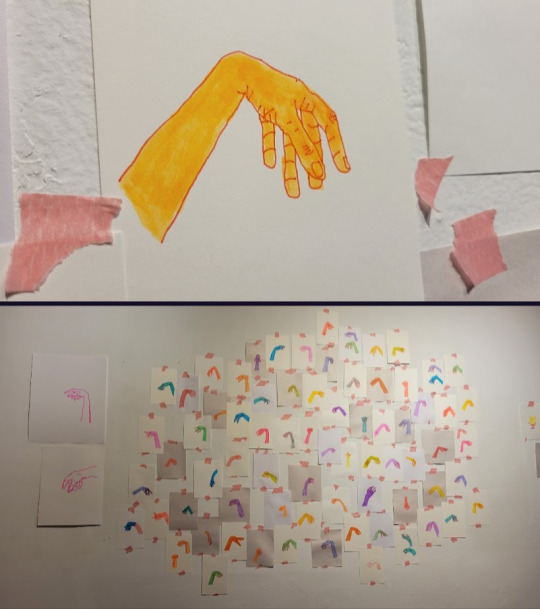
Bill Thelen / Bill Thelen [Drawing Room]

Skully Gustafson / Skully Gustafson

Fred Smith / Fred Smith
___________
* I typically write about work before reading gallery copy and have only just now encountered a list of related salient adjectives supplied by Crosby, which are available elsewhere. However, the fact that there are few overlapping terms in the two lists underscores the fertile elasticity of the premise.
** A word that pings in my head thusly: [flimsy/ flim-flam/ flambé/ flaming/ boy/ buoyancy/ bouyance/ clairvoyance/ (disco ball) dance].
*** My text my rules yes I just made up that word.
2 notes
·
View notes
Photo



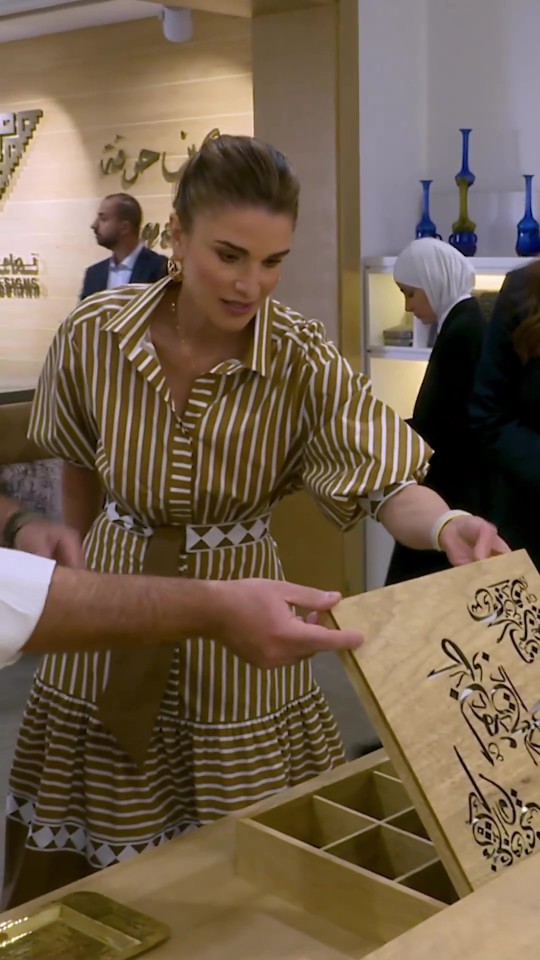






26 October 2022: Queen Rania met with Queen Silvia of Sweden in Amman, in the attendance of Princess Rym Ali and Princess Majda Raad. During the meeting, Their Majesties and Royal Highnesses discussed various issues of common interest.
She later launched the 25th Jordan River Designs handicrafts exhibition on Wednesday, inaugurating a new collection of items handcrafted by women from local communities across the country.
Spanning three floors at the Jordan River Designs showroom in Amman, the exhibition features a wide range of handmade items under the title “Playgrounds,” celebrating the traditional and contemporary arts of rural and nomadic Jordan. (Source: Petra)
To date, JRF’s social enterprise projects have empowered thousands of women and their families, granting them year-round technical and entrepreneurial training through Bani Hamidah Designs, Al Karma Embroidery, and Wadi Al Rayan Designs.
Accompanied by JRF’s Director General Enaam Barrishi, Director of Social Enterprises Mahfouz Said, and Senior Designer Faridon Abida, Her Majesty toured the exhibition, viewing this year’s selection of traditional home and office accessories, gift items, wall hangings, tapestries, rugs, and cushions. A visual adventure celebrating Jordan’s rich heritage, the exhibition boasts a number of themed collections titled “Excursions,” “Wonderlands,” and “Roots.”
Inspired by Jordan’s striking land and water scenery, rural folklore, and the festive spirit of nomadic culture, each collection employs a wide range of techniques, including needlework, embroidery, photography, printmaking, metalwork, and banana leaf and halfa basketry.
The Queen concluded her tour of the exhibit with a brief visit to JRF’s restaurant, Daimeh, where she mingled with the rest of the attendees. Among them were JRF’s Vice Chairman of the Board of Trustees, Amin Khleifat, as well as ambassadors and a group of the foundation’s partners and donors.
Established in 1995, JRF is a Jordanian non-profit, non-governmental organization chaired by Her Majesty Queen Rania. The foundation operates the Jordan Child Safety and Jordan River Community Empowerment programs, and aims to help Jordanians realize their full economic potential and overcome social challenges.
Since its inception, JRF has launched numerous socio-economic projects for local women and refugees, providing employment opportunities to enhance their livelihoods, while also focusing on child protection programs and efforts to tackle abuse.
7 notes
·
View notes
Text
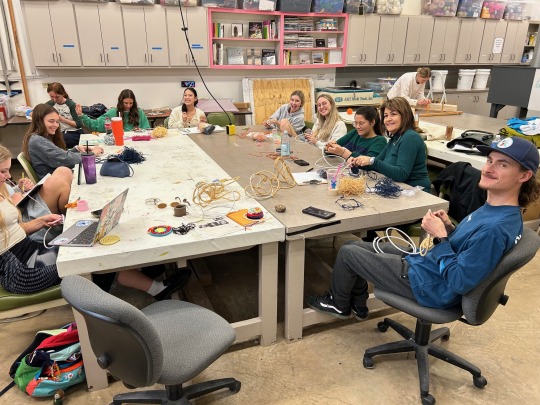
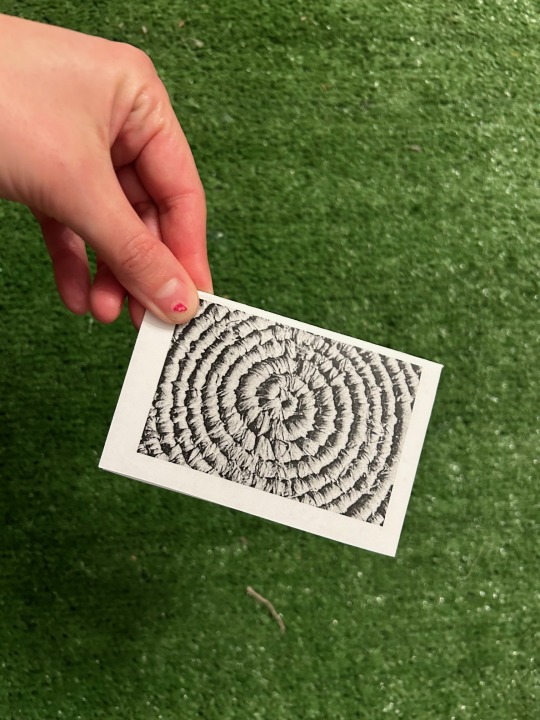
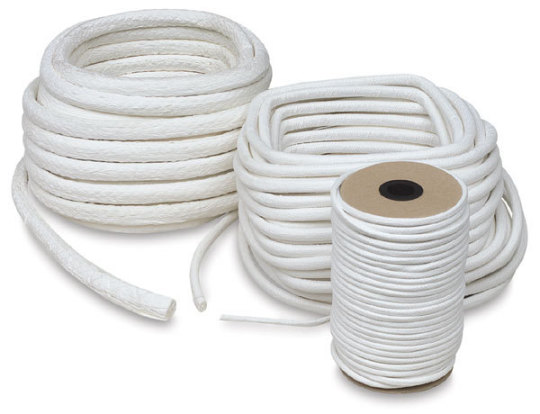


Coiling Basics
Coiling is a basketry technique that involves wrapping and stitching lengths of material around a central core material to create variety of complex forms starting from a circle or oval base.
Refer to the coiling zine about the coiling process as you are exploring this process. This handout was created from selections from the book “Contemporary Basketry” by Sharon Robinson.
Images above, from top:
our first day of coiling
our coiling zine
The paper core typically used to make coiled baskets. This is just one of many different materials that you can use to make a coiled basket. What else could you use to coil a basket? How could a meaningful choice of material enhance the concept of your work?
a few basic diagrams of the coiling process, showing how to get started and the basic figure 8 stitch (Figure Q-Figure S).
Heres a youtube video that shows the coiling process with yarn. We will be using raffia in class, but yarn or many other contemporary materials could also work to wrap and sew around your core material.
Here is another link that demonstrates the coiling process with step by step pictures. If you find a particular video or webpage helpful to learning this process, why not collect the resource for yourself by posting to your own blog? That way if you want to revisit the process in the future, you can pick up where you left off quickly and easily, a great use of the blog structure for your future benefit.
0 notes
Text
Carry Elegance Home: Discover Stylish Carry Baskets At Saprose Retail
Introduction
In the realm of home decor, finding the perfect balance between functionality and style is a perpetual quest. Saprose Retail emerges as a beacon for those seeking to elevate their living spaces with a touch of sophistication. Explore the world of Carry Baskets - an exquisite collection that seamlessly integrates practicality with elegance. From Rectangle Tiffin Baskets to intricately designed Braid Baskets, Saprose Retail offers a diverse range that caters to various needs, including baskets for tiffin, baskets for storage, and versatile Carry Baskets.
The Artistry of Carry Baskets
Saprose Retail's Carry Baskets transcend the ordinary, transforming daily tasks into moments of artistry. The Rectangle Tiffin Basket, a true standout in this collection, combines practicality with aesthetic appeal. Crafted with precision, these baskets redefine the traditional notion of tiffin carriers, presenting a stylish alternative for those who value both form and function. The integration of keyword basket for tiffin resonates with the modern consumer's desire for innovative yet practical solutions.
Versatility in Storage: Baskets for Storage
Storage solutions are a quintessential aspect of home organization. Saprose Retail's Carry Baskets extend their functionality to meet the demands of contemporary living. The Twin Braid Basket, an embodiment of versatility, stands out as an ideal choice for those in search of baskets for storage. Its intricate design not only adds a touch of glamour but also caters to the need for organized living. Discover how these baskets seamlessly blend into your home, providing storage solutions that are both stylish and practical.
Carry Baskets: A Fusion of Form and Function
Carry Baskets at Saprose Retail go beyond mere containers; they are a fusion of form and function. The Rectangle Tiffin Basket, with its stylish cover options in Khaki Silver, Blue Silver, Red Silver, and Grey Silver, exemplifies this blend. Whether used for serving meals in style or as a decorative piece, these Carry Baskets redefine the conventional understanding of utility items. The keyword Carry Baskets is not just a descriptor but a testament to the transformative impact these pieces can have on your home.
Exploring the Intricacies of Braid Baskets
Delve into the world of Braid Baskets at Saprose Retail, where intricate designs meet functionality. The Braid Craft Basket, available in captivating shades like Grey Melange, Ivory Melange, Red Melange, and Dark Grey Melange, is a testament to the brand's commitment to craftsmanship. Uncover the story behind each weave, celebrating the traditional art of basketry while seamlessly integrating these Braid Baskets into contemporary homes. The keyword Braid Basket takes center stage, symbolizing the delicate yet robust nature of these meticulously crafted pieces.
Embracing Functionality with Natural Braid Baskets
As we explore the Carry Baskets collection at Saprose Retail, the Natural Braid Basket with Cover emerges as a multifaceted gem. With a delicate interplay of Blue and White, Golden and White, Grey and White, and Khaki and White, these baskets epitomize the brand's commitment to offering choices that resonate with diverse tastes. Functionality meets aesthetics as the keyword baskets for storage finds new meaning. These Natural Braid Baskets, while serving as elegant storage solutions, seamlessly integrate into various home decor styles, adding a touch of sophistication to your living spaces.
A Symphony of Colors in Rectangle Tiffin Baskets
Saprose Retail takes the concept of Rectangle Tiffin Baskets to new heights by introducing a symphony of colors. The Red Silver, Khaki Silver, Blue Silver, and Grey Silver options not only cater to individual preferences but also allow for creative coordination with existing decor. As you explore the Rectangle Tiffin Basket collection, envision a vibrant and organized kitchen where these baskets not only serve their practical purpose but also become decorative accents, reflecting your unique style. The integration of the keyword Rectangle Tiffin Basket emphasizes the brand's dedication to redefining conventional notions.
Unveiling the Elegance of Baskets for Tiffin
In the fast-paced world, where every moment counts, Saprose Retail understands the importance of convenient and stylish solutions. The Rectangle Tiffin Basket with Cover emerges as a game-changer, offering a perfect blend of elegance and utility. The Khaki Silver, Blue Silver, Red Silver, and Grey Silver variants cater specifically to those in search of baskets for tiffin. Picture a scenario where your lunch or snacks are not only impeccably organized but also presented in a chic manner, elevating your dining experience at home or on the go.
Innovative Combos for a Complete Home Makeover
Saprose Retail goes beyond individual baskets, offering innovative combos that promise a complete home makeover. The integration of keyword Combos introduces a holistic approach to home decor. Imagine coordinating a set of Rectangle Tiffin Baskets with matching Twin Braid Baskets, creating a harmonious theme across different spaces in your home. These thoughtfully curated combos showcase the brand's commitment to making the process of decorating your home both convenient and delightful.
Contactless Shopping Experience and Customer Support
Saprose Retail not only provides a diverse and stylish array of Carry Baskets but also ensures a seamless shopping experience. The brand's online platform allows for easy navigation, making it convenient for customers to explore and select their preferred items. The availability of In Stock and Out Of Stock options, along with a price range filter, facilitates a tailored shopping experience. Moreover, Saprose Retail's commitment to customer satisfaction is reflected in its contact details, encouraging customers to reach out for assistance. Whether through a call to +91 8287831947 or an email to [email protected], the brand ensures that every query or concern is addressed promptly.
Conclusion
In the world of home decor, Saprose Retail's Carry Baskets collection stands as a beacon of elegance and functionality. From the versatile Rectangle Tiffin Baskets to the intricate Braid Baskets, each piece is meticulously crafted to carry sophistication into your home. As you explore the diverse range, the keywords Basket for Tiffin, Baskets for Storage, Carry Baskets, Rectangle Tiffin Basket, and Braid Basket seamlessly integrate into a narrative of style, practicality, and artistic expression. Saprose Retail invites you to embark on a transformative journey, where every basket is not just a container but a statement piece, redefining the very essence of home decor. Elevate your living spaces, organize with flair, and Carry Elegance with Saprose Retail's exquisite Carry Baskets collection.
#basket for tiffin#baskets for storage#basket#accessories for the home#saprose mats#home accessories#saprose#saproseretail
0 notes
Text
Episode 185 - Crafts & Crafting
This episode we’re discussing the non-fiction genre of Crafts and Crafting! We talk about art vs craft, makerspaces vs crafting spaces, the challenges of trying new crafts, academic crafting, and more!
You can download the podcast directly, find it on Libsyn, or get it through Apple Podcasts or your favourite podcast delivery system.
In this episode
Anna Ferri | Meghan Whyte | Matthew Murray | Jam Edwards
Things We Read (or tried to…)
Paper + Craft: 25 Charming Gifts, Accents, and Accessories to Make from Paper by Minhee Cho, Truman Cho, and Randi Brookman Harris
Re-Creative: 50 Projects for Turning Found Items Into Contemporary Design by Steve Dodds
Trash Origami: 25 Paper Folding Projects Reusing Everyday Materials by Michael G. LaFosse and Richard L. Alexander
Crafting Change: Handmade Activism, Past and Present by Jessica Vitkus
Hand Lettering: Creative Alphabets for Any Occasion by Thy Doan Graves
Mastering Hand-Lettering: Your Practical Guide to Creating and Styling the Alphabet by Mye De Leon
Creepy Cross-Stitch: 25 Spooky Projects to Haunt Your Halls by Lindsay Swearingen
A Crochet World of Creepy Creatures and Cryptids: 40 Amigurumi Patterns for Adorable Monsters, Mythical Beings and More by Rikki Gustafson
Chonky Amigurumi: How to Crochet Amazing Critters & Creatures with Chunky Yarn by Sarah Csiacsek
Simple Hand Sewing: 35 slow stitching and mindful mending projects by Laura Strutt
Boro & Sashiko, Harmonious Imperfection: The Art of Japanese Mending & Stitching by Shannon Mullett-Bowlsby and Jason Mullett-Bowlsby
Wilderness Knits for the Home by Linka Neumann
Other Media We Mentioned
Two Point Hospital (Wikipedia)
Two Point Campus (Wikipedia)
Links, Articles, and Things
Fuse beads (Wikipedia)
Jam’s Tiger Millionaire costume (and their trophy)
Tiger Millionaire (Steven Universe Wiki)
The cross stitch Matthew finished the night before recording
Bone folder (Wikipedia)
Fourth Doctor (the one with the scarf) (Wikipedia)
Creativebug (see if your library provides access)
Creepy halloween mask template
Granny square (Wikipedia)
Creepypasta (Wikipedia)
15 Crafts and Crafting books by BIPOC Authors
Every month Book Club for Masochists: A Readers’ Advisory Podcasts chooses a genre at random and we read and discuss books from that genre. We also put together book lists for each episode/genre that feature works by BIPOC (Black, Indigenous, & People of Colour) authors. All of the lists can be found here.
Weaving in the Peruvian Highlands: Dreaming Patterns, Weaving Memories by Nilda Callañaupa Alvarez
The Embroidered Garden: Stitching through the Seasons of a Flower Garden by Kazuko Aoki
asowacikanisa: A Guide to Small Metis Bags by Amy Briley and Gregory Scofield
Knitting for Radical Self-Care: A Modern Guide by Brandi Cheyenne Harper
This Long Thread: Women of Color on Craft, Community, and Connection by Jen Hewett
Print, Pattern, Sew: Block-Printing Basics + Simple Sewing Projects for an Inspired Wardrobe by Jen Hewett
Embroidered Animals: Wild and Woolly Creatures to Stitch and Sew by Yumiko Higuchi
Super Easy Amigurumi: Crochet Cute Animals by Mitsuki Hoshi
Mini Knitted Woodland by Sachiyo Ishii
The Art of Mi'kmaw Basketry by edited by shalan joudry and Holly Brown Bear
Embroidery: A Modern Guide to Botanical Embroidery by Arounna Khounnoraj
Visible Mending: A Modern Guide to Darning, Stitching and Patching the Clothes You Love by Arounna Khounnoraj
The Tunisian Crochet Handbook: A Beginner's Guide by Toni Lipsey
Literary Yarns: Crochet Projects Inspired by Classic Books by Cindy Wang
The Auntie Sewing Squad Guide to Mask Making, Radical Care, and Racial Justice by Kristina Wong
Give us feedback!
Fill out the form to ask for a recommendation or suggest a genre or title for us to read!
Check out our Tumblr, follow us on Instagram, join our Facebook Group, or send us an email!
Join us again on Tuesday, December 5th we’ll be talking about the genre of Suspense Fiction!
Then on Tuesday, December 19th it’s time for our Favourite Reads of 2023!
1 note
·
View note
Text
Embracing Tradition: The Timeless Beauty of Handmade Artefacts in the UAE
Introduction:
The United Arab Emirates (UAE) is a nation that effortlessly blends the modern with the traditional. Amidst the towering skyscrapers and bustling cityscapes, the UAE's rich cultural heritage thrives, best exemplified by its exquisite handmade artefacts. These unique creations not only showcase the remarkable craftsmanship of local artisans but also provide a glimpse into the region's fascinating history and traditions. In this blog, we delve into the world of UAE's handmade artefacts and discover the stories and artistry behind these timeless treasures.
Craftsmanship Passed Down Through Generations
The art of creating handmade artefacts UAE has been passed down from generation to generation, ensuring that age-old techniques and skills are preserved and cherished. Skilled craftsmen and women, often working in small workshops or at home, dedicate their time and talent to produce these beautiful pieces that represent the cultural identity of the region.
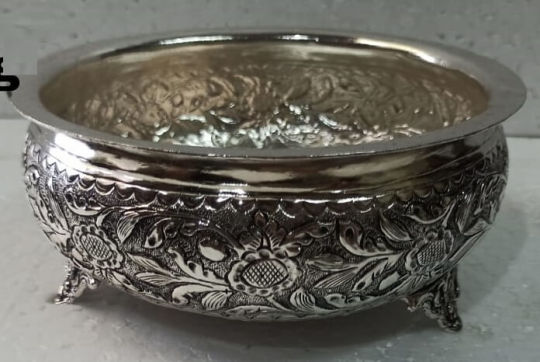
Types of Handmade Artefacts
The UAE is home to an extensive array of handmade artefacts, each reflecting the unique heritage and traditions of different regions. Some of the most notable types include:
Traditional Textiles: UAE is famous for its exquisitely woven fabrics and textiles. Emirati women are skilled weavers, creating beautiful handwoven carpets, rugs, and garments adorned with intricate patterns and designs.
Pottery and Ceramics: The art of pottery has a long history in the UAE. Clay pots, vases, and decorative ceramics showcase the craftsmanship of local potters and their ability to transform raw materials into functional and artistic pieces.
Metalwork: The UAE has a rich tradition of metalwork, with artisans skilled in working with brass, copper, and silver. Elaborate coffee pots, incense burners, and traditional jewelry are some of the exquisite examples of their craft.
Pearl Jewelry: Before the discovery of oil, pearls were a significant source of wealth for the region. Today, pearl jewelry continues to be an essential part of Emirati heritage, with handcrafted pieces featuring lustrous pearls set in intricate gold and silver designs.
Palm Leaf Crafts: The UAE's palm trees provide versatile materials for crafts like basketry and weaving. Skilled artisans create unique palm leaf baskets, mats, and other products, often showcasing a blend of traditional and contemporary designs.
Preserving Cultural Identity
Handmade artefacts UAE play a crucial role in preserving the country's cultural identity. These creations embody the essence of Emirati traditions, beliefs, and values, serving as a tangible link to the past while embracing the present. As the UAE continues to grow and modernize, the appreciation and support of local artisans and their handmade creations become even more vital.
Tourism and Economic Impact
Handmade artefacts have not only become a significant draw for tourists seeking authentic cultural experiences but also a valuable source of income for local artisans. The burgeoning art and craft markets in the UAE provide a platform for these skilled artisans to showcase their work to both domestic and international audiences.
Promoting Sustainable Practices
In an age where sustainability is becoming increasingly important, handmade artefacts hold a special appeal. These creations often utilize locally sourced materials and rely on traditional, low-impact production methods. Supporting these artisans and their eco-friendly practices can contribute to sustainable development in the UAE and beyond.
Conclusion
The UAE's handmade artefacts represent more than just beautiful artistry; they are a testament to the resilience of a culture that values its heritage and traditions. From the weavers and potters to the metalworkers and pearl craftsmen, these skilled artisans infuse their creations with a part of themselves, carrying the torch of their ancestors and passing it on to future generations. By cherishing and supporting handmade artefacts, we not only honor the past but also contribute to the preservation of a rich cultural legacy for the future. So, the next time you encounter a beautiful Emirati handmade artefact, take a moment to appreciate the passion and history woven into its fibers or intricately crafted form.
#Handmade Artefacts UAE#best promotional bag gifts UAE#leather gift items supplier UAE#customized Trophies supplier in Dubai#luxurious gift ideas in UAE#luxury corporate gifts dubai
0 notes
Text
The Edwardsville Arts Center Is Proud To Present: Weave, Coil, Twine, Plait, Knot: Traditional And Contemporary Basketry Exhibition
http://dlvr.it/SjQJVs
0 notes
Text

Contemporary Basketry
Jennifer Heller Zurick | Untitled piece
14 notes
·
View notes
Text
youtube
Jonathan Baldock
Facecrime is the first solo exhibition in Scotland by Jonathan Baldock (b. 1980) who works across multiple platforms including sculpture, installation and performance. Baldock has an ongoing interest in the contrast between the material qualities of ceramic and fabric, drawing them together in his theatrical installations and sculptural assemblages.
Facecrime is comprised of a series of ceramic columns inspired by the discovery, in 1974, of more than a thousand perfectly preserved clay tablets, inscribed in cuneiform - an early writing system - ca. 2500 BC, in the ancient city of Ebia, Syria. This exhibition pays homage to these extraordinary artefacts, developing an alternative history of clay as a tool of communication and a carrier of language that defiantly stands the test of time.
Drawing from histories of labour, folklore and storytelling, Baldock experiments with glass, basketry and spinning to highlight the decline of traditional making and skills lost due to technology. In his recent works, Baldock uses these traditional techniques to depict contemporary forms of communication, creating classical-digital hybrids which draw early human script into dialogue with the emoji, the fastest growing language.
Borrowing its title from George Orwell's dystopian novel, 1984, the exhibition evokes an absurd and unsettling contemporary ruin that the audience wander amongst as though discovering the signs and visual languages of a once prosperous civilization.
0 notes
Text
youtube
Jonathan Baldock
Facecrime is the first solo exhibition in Scotland by Jonathan Baldock (b. 1980) who works across multiple platforms including sculpture, installation and performance. Baldock has an ongoing interest in the contrast between the material qualities of ceramic and fabric, drawing them together in his theatrical installations and sculptural assemblages.
Facecrime is comprised of a series of ceramic columns inspired by the discovery, in 1974, of more than a thousand perfectly preserved clay tablets, inscribed in cuneiform - an early writing system - ca. 2500 BC, in the ancient city of Ebia, Syria. This exhibition pays homage to these extraordinary artefacts, developing an alternative history of clay as a tool of communication and a carrier of language that defiantly stands the test of time.
Drawing from histories of labour, folklore and storytelling, Baldock experiments with glass, basketry and spinning to highlight the decline of traditional making and skills lost due to technology. In his recent works, Baldock uses these traditional techniques to depict contemporary forms of communication, creating classical-digital hybrids which draw early human script into dialogue with the emoji, the fastest growing language.
Borrowing its title from George Orwell's dystopian novel, 1984, the exhibition evokes an absurd and unsettling contemporary ruin that the audience wander amongst as though discovering the signs and visual languages of a once prosperous civilization.
0 notes
Text

My work operates within the realm of contemporary basketry, working with small scaled, cocoon and hive like forms
0 notes
Text
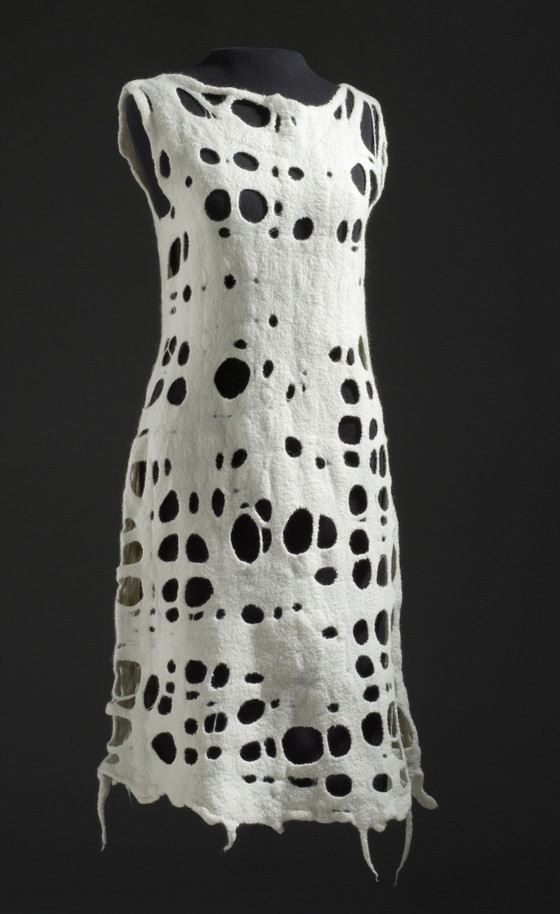

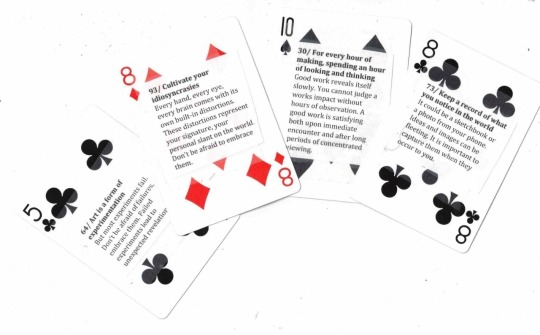
Welcome to Non Woven Structures!
This website is devoted to the exploration the world of non woven fiber structures alongside our in class time together this Spring. This course explores a wide range of off loom textile structures such as basketry, netting, crochet, felting and soft sculpture.
This website will serve as the homebase for this class. Check here regularly for important course information on fiber techniques, processes, and concepts as well as information for all assignments, class announcements, and detailed linkable fiber art resources.
We will examine off loom textile techniques together in hopes of finding ways that the concepts, materials, and processes of fiber might serve to enhance your own developing art practices, wherever you go after this class.
I’m glad you are here!
Images above, from top:
I wish I was in LA to see the exhibition “Woven Histories: Textiles and Modern Abstraction” before it closes at the end of the month. However, I was able to purchase the catalogue for our fiber class library which features this particular work by contemporary artist Andrea Zittel made using the felting process which we will learn this semester.
From the exhibition press release:
“Woven Histories: Textiles and Modern Abstraction foregrounds a robust if over-looked strand in art history’s modernist narratives by tracing how, when, and why abstract art intersected with woven textiles (and such pre-loom technologies as basketry, knotting, and netting) over the past century. Although at times unevenly weighted, the diverse exchanges, alignments, affiliations, and affinities that have brought these art forms into dialogue constitute an ongoing if intermittent narrative in which one art repeatedly impacts and even redefines the other. In short, the relationship between abstract art and woven textiles can best be described as co-constitutive, and their histories as interdependent. With over 150 works by an international and transhistorical roster of artists, this exhibition reveals how shifting relations among abstract art, fashion, design, and craft shaped recurrent aesthetic, cultural, and socio-political forces, as they, in turn, were impacted by modernist art forms.“
our informal fiber studio logo designed by Baylor Graphic Design Spring 2023 graduate Delaney Bullock!!
some things to learn in fabric surface design, from a deck of cards I made using text from the book “101 Things to Learn in Art School” by Kit White. P.S. This book is available for you to look at during class in our new fiber studio library.
0 notes
